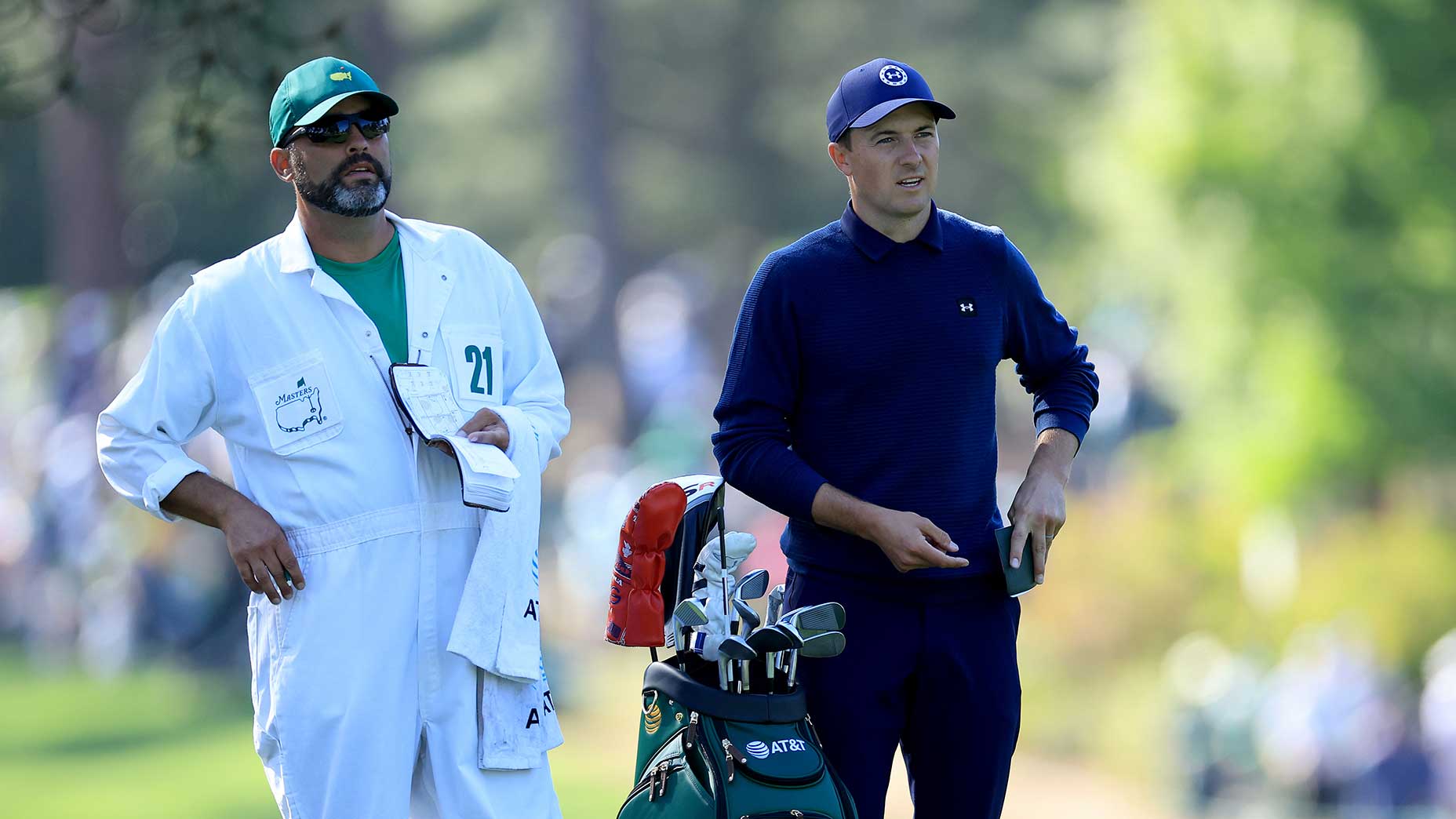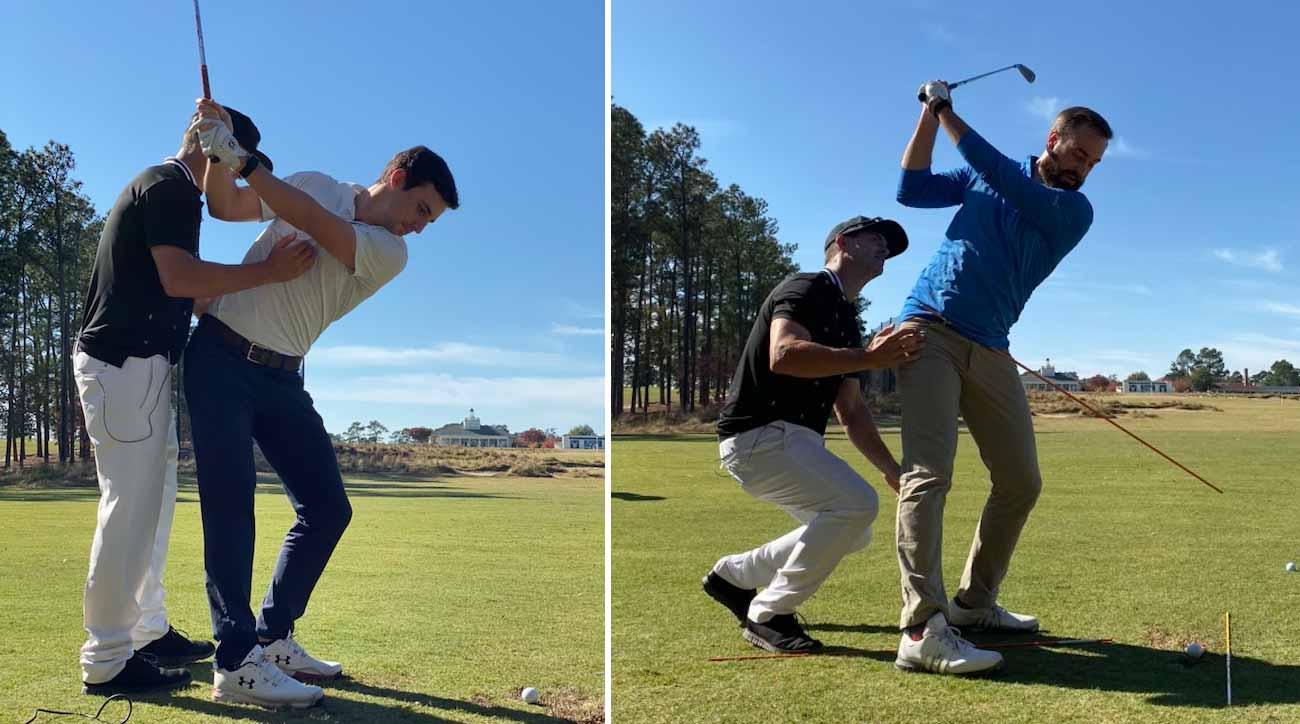 5 elite caddie habits you should steal to shoot lower scores
5 elite caddie habits you should steal to shoot lower scores
What it’s like to get a lesson from the game’s hottest teacher, George Gankas

When it comes to the world of golf instruction, George Gankas may be golf’s hottest rising star. We’d call him a cult hero, but the cult has grown so big that he’s now just … famous. Want a lesson from the pride of Westlake, Calif.? Better be prepared to pay $500-$1,000/hour — and wait until June for an opening. But, in a lucky twist of fate, Gankas needed two subjects to use as a part of his keynote speech (read: lesson) at GOLF’s Top 100 Teachers summit. So there we (Sean Zak and Dylan Dethier) were, suddenly getting a free lesson in front of dozens of the very best teachers in the game. Here’s what that was like — and stay tuned for a full video of the experience.
What were your first impressions of George Gankas?
Dylan Dethier: I’d actually met Gankas for breakfast last year near his course in Westlake Village, Calif. We met at his favorite diner; before long we were standing in the middle of the room while he animatedly demonstrated address posture and proper hip turn. In his world, that’s normal behavior, and it’s really fun to get swept up in that. Today was the same; we had a couple minutes to kill and he spent that time ripping as many drivers as he could while we waited for a shuttle ride. The guy loves the golf swing.
Sean Zak: He’s captivating. Between the instruction jargon, his Cali vibes or just how he looks you in the eyes, he grabs your attention. After he started hammering drivers, like you said, people kind of just … magnetically moved in his direction to watch.
How did your lesson start? What did Gankas identify in your swing that he wanted to tackle?
Zak: As the first guinea pig, I warmed up with five 7-irons in front of the best golf swing minds in the world. One of them was pure and the other four were weak cuts (my common miss), which ended up being perfect. The visual wipey fade set a standard. Gankas attacked my path, which I’ve long known was an issue, by standing me up straighter, moving me closer to the ball and trying to get me to hit snap hooks.
Dethier: I generally hit it pretty consistently but I’ve never been accused of being “pure,” per se. Gankas described this as being a little “tinky,” and got to work addressing that, with a goal of better contact.
Describe his teaching style. How’d you feel during the lesson?
Zak: I felt properly violated, in a good way. Hope that makes sense. He pinpointed all the adjustments I had been making in my swing that contributed to that weak cut — the slightly weak grip, cupping my wrist during an abbreviated backswing, not enough hip rotation to finish the swing, etc. All of that at once was a bit disorienting, but that’s not how a typical lesson with him would go, he said. Gankas said if he wasn’t in the middle of a presentation, he would work on standing me up straighter much longer, like holding my back against a slippery surface to keep me from bending over so much.
Dethier: That’s an important point — at home, Gankas knows exactly where all his stuff is, and here he was basically just flying blind and teaching by feel. So we didn’t get the full experience, but we certainly got the general idea. He’s honest, and he doesn’t blow any smoke, but he’s definitely reassuring. I never got any lessons growing up but now, being in the biz, I’ve spent some time around some very bright instructors. Sometimes I’ll feel self-conscious, like I’m being evaluated in a judgy sort of way. With Gankas there was none of that. He kept emphasizing that there was actually no possible downside to this lesson — neither of our lives would be measurably changed no matter what happened. That’s a funny thing to type, but it gave me permission to hit bad shots without fear of judgment, which helped a lot (“I don’t give a s—” is a common phrase). I bladed several irons in a row while working through one of his suggestions, and he complimented each one of them.
What, specifically, did he want you to do? Did it work?
Zak: He wanted me to get more vertical in my stance and rotate more in the backswing, lengthening the swing a bit. My swing wasn’t long enough to engage my lower body as much as I should, so my lower half would rush toward the ball, leaving my upper half to catch up to it. On good days, I hit it pretty well. On most days, there would be an element of that weak fade. On bad days, very inconsistent ball contact.
Over the course of 20 minutes he constantly pulled me up straighter, made me turn my hips, fully extend my left hand from my body and hit half-shots, trying to hook them. It definitely worked, which was cool. Seeing my ball go left, with a sound strike, certainly made it feel like my path was changing.
Dethier: Gankas is a super hands-on instructor, literally. So he helped get me into some slightly different mid-swing feelings (“positions” doesn’t seem like quite the right word). First, he got me standing up slightly straighter and rounding my shoulders. This freed me up a little bit, relieved some tension in my back and helped get me into a deeper turn, rotating and loading back into my right hip — but minimizing any right-ward sway. He pulled my hands higher. He strengthened my grip (rotated my left hand a little further right). The backswing felt awesome, like I suddenly had more comfort, freedom and power. Then, to get me to match that same turn on the way through, he helped me clear out my left shoulder a bit more. That was the most difficult part for me, and there were some time constraints in place (I’d have loved to go for another hour) but by the end I could definitely feel crisper contact.
ADVERTISEMENT
This is obviously a high-powered group of revered teachers in attendance. What were their reactions to the lesson? What were their questions?
Zak: They were impressed with me, for some reason! Many of them expected me to be nervous, but once Gankas starts zeroing in on you, it feels like you’re in a bubble with him. No result matters. No screw-up matters. Improvement on the things he’s pointing out is what matters, which is really freeing. The common question was something like, “Now, how are you going to take that and go and improve on your own,” to which I have no idea. Without a good driving range at my disposal in NYC, I’ll probably do a lot of thinking about it until spring next year. Got my 2020 swing visualized!
Dethier: It’s funny, the entire summit (like most industry summits, I suppose) is chock-full of clashes between different approaches to teaching. Gankas isn’t everybody’s speed. But it was a packed house, and nearly every teacher was fascinated with his approach and eager to watch him in action. There were a bunch of specific questions about why he was tackling things in the order that he was with Sean’s swing and my swing, plus there was some interest in Matthew Wolff’s swing. There were plenty more questions after the lessons were over, too, when teachers crowded ‘round to ask him more in-the-weeds stuff. This is golf swing nerd-dom, after all.
What makes Gankas different from your typical golf instructor?
Zak: I think what makes him different is probably that he has a swing in mind for you. After he sees what you’re capable of, he devises a route to get you to the swing he has in mind, which is one that is comfortable for you and delivers results. Though he speaks in a lot of jargon (which was probably influenced by his audience), it all seems to point you in the direction of a fruitful destination.
Dethier: There’s some surface-level stuff, like the way he dresses and his use of, uh, colorful language. But really what sets him apart is his passion and personality. That’s not a knock on his knowledge, which is very legitimate. But there are other guys who can match that. What’s harder to match is his rapport with players, his hands-on approach and the general way he seems fascinated to be working with you.
ADVERTISEMENT






